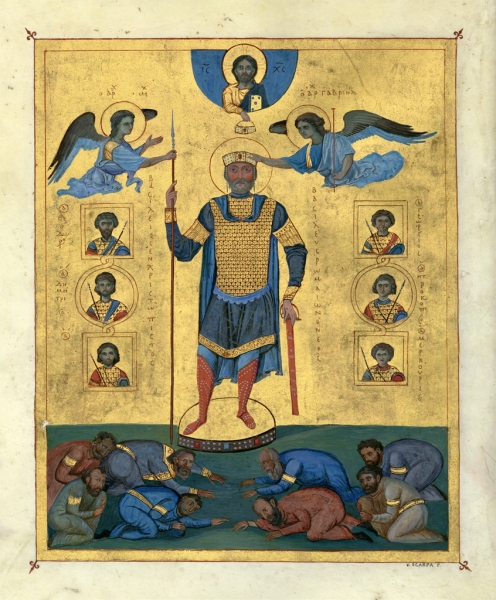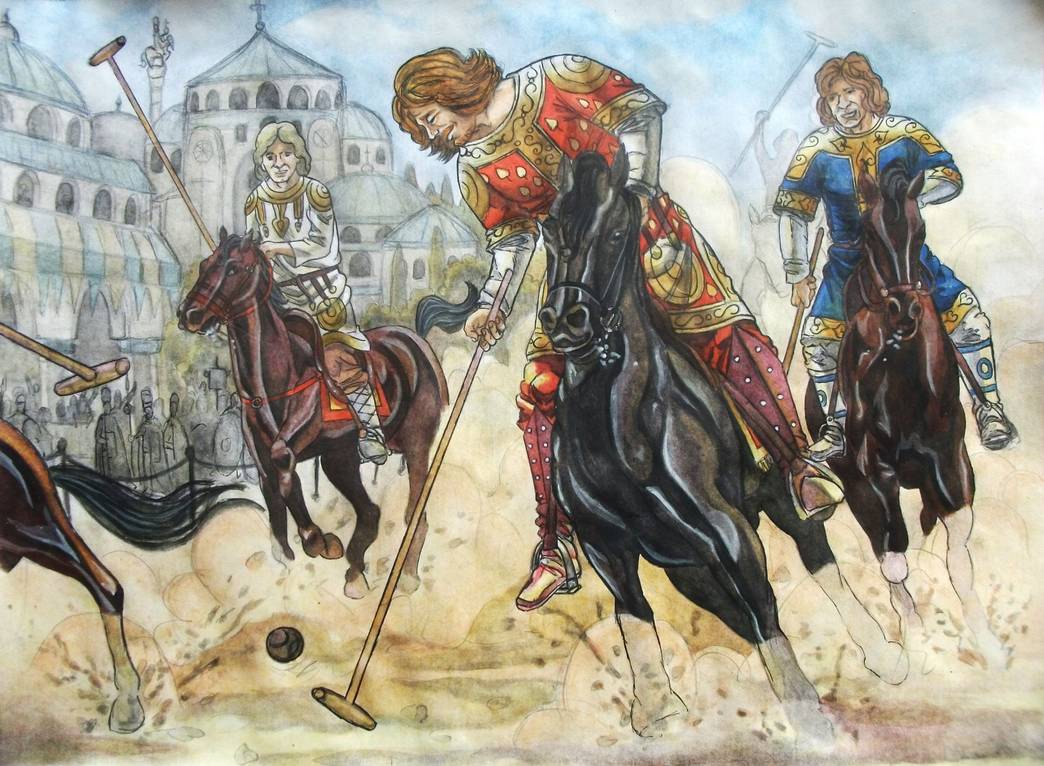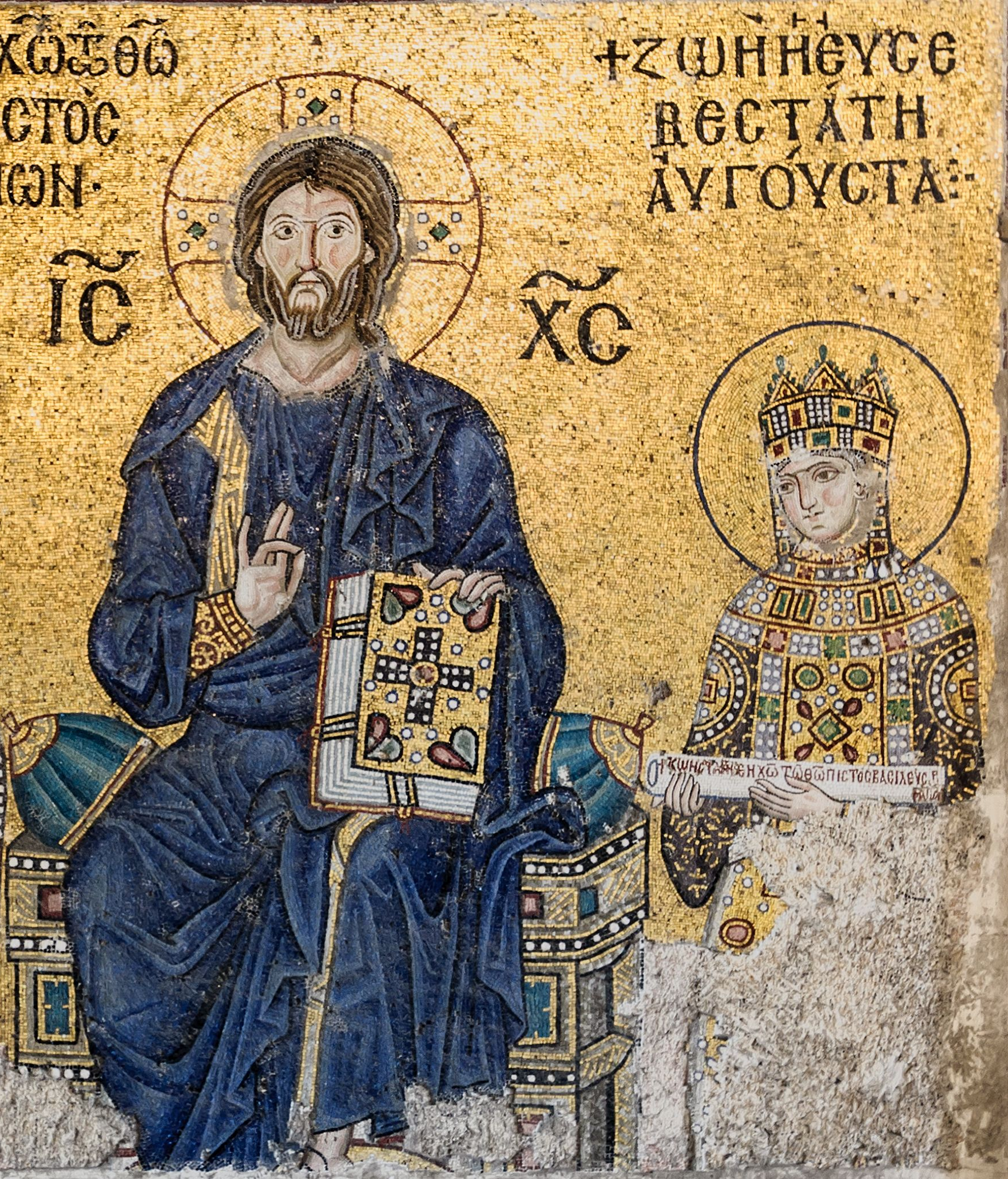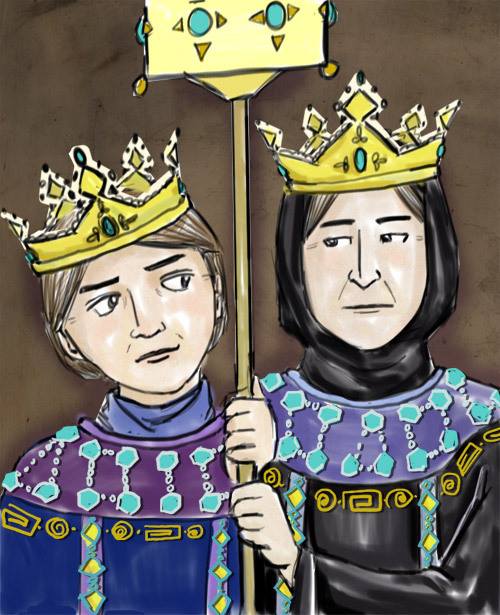On 15th December 1025, the famous Basil II the Macedonian left his final breath, bequeathing an intimidating and solid-state to his only brother and successor Constantine (Konstantinos). Technically, Constantine had always been a co-emperor of Basil since 962 and an equal partner in the Purple during the 49 years of Basil’s reign. Nevertheless, Constantine was a man of different interests and didn’t share his brother’s enthusiasm for the political affairs of the Roman Empire and during the long administration of Basil, he avoided the spotlight.

UNDER BASILS SHADOW…

In his younger days, Constantine was an extremely athletic prince; he used to take part in running, wrestling competitions and adored to spend his time hunting. He was tall with a well-built physique and had mastered the art of horse-riding as every byzantine worth his salt. Like Basil, he was not a philosopher, neither an orator and his education was not the highest for a classic Romaios aristocrat, however, his speaking eloquence used to captivate the foreign ambassadors visiting his court.

It appears Constantine also had experience in war affairs. He had followed his brother in some of his campaigns, such as his final victorious expedition against the usurper Bardas Phocas. He had also followed Basil in a campaign on the eastern front, in 995, urging him to strike the city of Aleppo, then under the control of the Fatimids. But overall it appears that he was not entrusted with many political duties.
Basil remained unmarried and thus was weary of natural heirs, so on his deathbed, he had no other available choice but to summon Constantine to the capital from his villa in Nicaea and give him and his daughters, the strong scepter of the Romans.
ENEMY OF THE FEUDARCHS
The news for Constantine’s proclamation as sole Basileus brought no rejoice to the aristocracy. Constantine decided to vanquish the last remnants of the great landholder families, the proud class of Dynatoi (meaning the Strong Ones), something that Basil had astonishing enough avoided after his triumph against the great clans of Asia Minor.

Members of the Dynatoi families such as the Phocades and Skleroi were mutilated, thus paying the price for their ancestors’ fault to undermine Basil’s early reign during the 970’s – 980’s. One of the victims of Constantines’ anti-nobles «pogrom», was also the Dux Nikephoros Komnenos, a progenitor of the future dynasty of the same name. So its no surprise, that the soon to come, Komnenian emperors, made sure to tarnish and mud the posthumous reputation of Constantine, after their elevation to the throne. (1081).
INSIDE THE WALLS OF ROMANIAE…
With the people of the Byzantine Republic Constantine followed a more multidimensional policy. Despite the drought, he insisted at the gathering of older, previously forgiven taxes (something necessary for the imperial treasury), but at the same time, he revoked the collection of taxes for abandoned land and reduced the price for taxes not paid when due.
Showing his more humanitarian approach, he also opened the cells of prisoners captured during revolts against his brother showing their way to the light of liberty after decades of prison. But still, when the citizens of the city of Nafpaktos (Lepanto, Western Greece) rose in revolt against their local governor, Constantine showed his more punishing nature and ordered sentences for many notables, such as the local bishop who was deprived of his sight.
At a political level: Constantine preferred to appoint in influential positions faithful subjects residing in his very close circle. Eunuchs occupied important offices such as the leadership of the Dukedom (Doukato) of Antioch and Iberia in the eastern corners of the now vast empire. Eunuchs were always an attractive choice for the dangerous court hierarchy of Constantinople, as Roman customary law banned them from the Imperial dignity. He also relied upon the old families of his brother’s officers, creating a straight continuity between his own reign and Basil’s previous administration.
AN INCAPABLE EMPEROR?
Let us see some important events during Constantine’s short sole reign:
1. AGAINST THE REGENT OF COLCHIS…
After the passing of the Georgian King Giorgi I (1027), his wife Mariam Ardzruni of Vaspurakan took over the regency of the Iberian Kingdom on behalf of her soon to be King Bagrat IV. She renewed the past -and very unfortunate/unecessary!- Georgian/Roman tension and seized certain forts that her husband had once gifted to Basil.

On behalf of his Basileus, the Parakoimomenos Nikolaos, proving himself more than worthy of the title of the “domestic of the school”, invaded Mariam’s kingdom and crushed all resistance. Soon the proud Regent was forced to return all the forts she had conquered and requested a peace treaty. Nikolaos had the manpower to cause greater troubles to the countries of Caucasus but was forced to return to Constantinople after receiving the ill tidings that his emperor was suffering a terminal illness.
Nikolaos’ campaign was a warning from Constantinople to the Georgian court and its seat, Kutaisi, that it still functioned as her protectorate and any attempt for political independence from the Queen of the Cities could induce severe retributions.
However, the great Dowager Queen Maria in the next decades would become the leader of the pro-byzantine circles inside the Iberian Kingdom and would spend much of her time in Constantinople as an honorable visitor.
2. OTHER FRONTIERS
A. In the Aegean Sea, the naval theme of Samos, rooted an Arab fleet -of unknown origin- in 1026.
B. Constantine Diogenes (father of the future emperor Romanos VI Diogenes) was appointed Doux of Bulgaria. The governor successfully drove back a Pecheneg raid, thus confirming the Roman supremacy in the Balkans.
A GROOM FOR ZOE?

The sharpest thorn for Constantine’s reign was the finding of a solution for the continuation of the Macedonian family. Constantine had three daughters from his marriage with Augusta Helena -of a very prominent byzantine family-: Eudokia, who had assumed the monastic veil, Zoe and the younger Theodora. The two Porphyrogenitai (born in the royal purple) princesses, Zoe and Theodora, had some rather feeble hopes to continue the imperial family. Zoe was a woman in her 50s and Theodora in her mid-40s, thus the odds of bringing to life a child wasn’t at their side. Constantine started a real hunting so to find the right man to marry Zoe and lead the empire in his absence.

The first choice of the old Emperor was Constantine Dalassenos, an old retired Doux of Antioch, living in his estates in the Armeniakon theme. Still, Dalassenos was days far from the capital in order to successfully impose himself in case of opposition.
Due to political interests, Dalassenos soon ceased to be a candidate and Constantine decided to offer the purple to Romanos Argyros, the Prefect of the City and a close relative of the Macedonian family. The shocked Romanos was summoned in front of the soon to fade Constantine. He had to face a clear and simple dilemma: either divorce his wife, marry Zoe and become her Basileus or lose his sight.

Source: https://www.doaks.org/resources/seals/byzantine-seals/BZS.1951.31.5.1664
Nevertheless, the Roman Law was extremely protective of female matrimonial rights and the already existent marriage of Romanos couldn’t simply be annulled. Patriarch Alexios had to intervene in order to force the wife of Romanos to a convent. Constantine having secure –for now- the continuity of his family perished satisfied. He was the last Roman Augustus to seek his ultimate eternal sleep on the Church of Holy Apostles -the grand imperial Mausoleum since the times of Constantine the Great- marking the end of an era.
A PROBLEMATIC REPUTATION?
Constantine is an emperor that wouldnt be fair to compare to the size of his brother Basil, but he was also in no case an incompetent ruler as several modern historians have to portray him over the years. At 1028, at an international level, nothing had really changed since Basil’s death; Romaniae was still a superpower for both West and East, the strongest protector of eastern Christendom and safe from all frontiers.
Constantine was indeed able for some notable cruelties against the aspiring dangerous aristocracy; however, we shouldn’t judge all the political existence of Constantine from the perspective of nobility, especially when we are not aware if some of Constantine’s retributions were indeed justified. Furthermore, the future damaging interference of the class of Dynatoi in the affairs of the Roman state, constitute Constantine sanctions paramount.

CITY VS COUNTRYSIDE: A PROLOGUE!
On the other hand, the really flawed element of the new administration formula -that Constantine inaugurated- was the alienation of the army officers from the Macedonian regime. They found themselves secluded from titles, imperial favor, funds, and opportunities to rise high in the imperial structure. In this spirit, the political struggle between opposite parties gradually monopolized the domestic life of the empire.
In the decades to come, this system would create political alienation and hatred between Constantinople’s court, the civil officials and the military aristocracy of the provisions, a war between the city and the countryside. This dipole would torment the domestic stability of the Roman state until 1081, when through the wedding of Alexios Komnenos (the rural) and Irene Doukaina (the civic), the two sides would reconcile once more in a new combined administration, that is known in historiography as the Komnenian System (when in reality it should be addressed as the «Era of Byzantine Aristocracy»).


Σχολιάστε